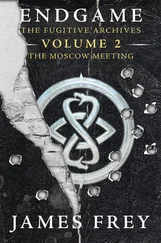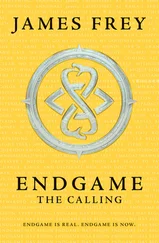One of them took the initiative and urged the others to act, and they started moving towards me and my team. We can always hear them as they bring the patient into the trauma bay, hear the wheels of the gurney, the various squeaking sounds it makes, hear the nurses talking to each other, sometimes the patients scream, cry out, or moan. As they get closer, I tend to become calmer, more focused, and more aware, and time slows down in a way that makes those few brief moments seem incredibly long and peaceful. I sometimes wish I could live forever in that state, and believe that those who find enlightenment, people like Ben, though he discovered so much more than that, live their entire lives that way.
The doors opened and he was brought into the trauma bay, and for the first time in my fifteen-year career I heard an audible gasp come from every single person in attendance. It was a surreal, unbelievable sight, like something out of a Hollywood horror movie, something that shouldn’t have been possible and isn’t possible, but was right in front of my eyes. There was blood everywhere. There were huge, deep lacerations everywhere. When I heard glass shards, I expected small pieces of glass, maybe an inch long at their longest. What he had in his body were not shards, but actual pieces, some as tall as ten inches, some as wide as twelve inches, and we were only seeing what was visible above the level of his skin. The back of his skull had been crushed, and there were pieces of it that appeared to be missing. We could not see his face at all because it was entirely covered in blood. Everything was entirely covered in blood.
The first stage of treatment in any trauma situation is the stabilization of the patient. Death from blood loss was the obvious first concern. If a patient has lost more than 40 percent of their body’s blood volume, they are likely to be in decompensated hypovolemic shock, which usually results in multi-organ failure. While we checked his blood pressure, which was at 40 over 20, the lowest I’d ever recorded in a living patient, and checked his pulse, which was 30, again an absurdly low number, we gave him injections of epinephrine and atropine to jumpstart his heart and get his blood pressure and pulse up.
Simultaneously, we tried to get heart-rate monitors and BP monitors on him, but it was incredibly difficult because we were weaving the wires around glass shards that had very sharp edges. We inserted a central venous line and transfused him with type O negative uncrossmatched red blood cells. Though we wanted, at some point, to take the glass out of him, we needed him to be stable first, and we needed to figure out which pieces to remove first, and in what order the rest of them would come out.
He shut down three times in my care, went into full cardiac arrest. We defibrillated him, which was difficult because of the glass, and on one occasion I absolutely know the defibrillation worked, but on the other two his heart appeared to start functioning again on its own, which was both surprising and confusing. We kept putting blood into him and he kept bleeding and we kept putting it in. I don’t know the actual amount, but it became something of a game, a game where a man’s life appeared to be at stake, and in which I and the other people in the room were working with incredible urgency and resolve, making sure we were transfusing more blood in than he was losing, a game that we knew would result in death if we did not succeed. What we could see of his skin was white, and I don’t mean the Caucasian white, I mean truly white, alabaster white, like he was carved from marble. And no matter how much blood we put in, his skin didn’t change, and his body showed no indication that it was actually maintaining the blood.
While we were stabilizing him, I also needed to cover and protect his head. He had sustained a comminuted skull fracture, which means it had broken into a large number of small pieces, through which I could clearly see his brain. I assumed there was intracranial bleeding, most likely subdural, epidural, or intraparenchymal, and even if I could keep him alive, he would suffer from massive brain damage. We applied compression dressings using sterile surgical bandages, gauze, and surgical tape and moved his head as little as possible. We found pieces of his skull that were the size of nickels and bagged them in case we might be able to use them later.
Two extremely long and stressful hours after he arrived at the hospital, his heart rate and blood pressure were stable, or at least stable enough for us to attempt to start removing the pieces of glass from his body. I took a step back and took a deep breath and looked at what was ahead of me. There were three IV lines transfusing blood into his body. We were applying pressure everywhere we could, but blood was still coming out of him at a rather alarming rate. We had been able to clean him up and cut away his clothing, and his skin was still deathly white. There was glass protruding from his legs, his arms, his abdomen and chest, there were smaller pieces in his face, and there were a number of large pieces that had been deeply imbedded into his back when he hit the ground.
I tried to identify pieces of glass that had nicked, punctured, cut, or potentially severed major veins and arteries: the jugular veins, carotid arteries, and subclavian arteries and veins in the neck, and the femoral arteries and veins in the legs. I wondered what I couldn’t see, possibly damage to the aorta, the inferior vena cava, or the pulmonary vasculature, which are deeper in the chest and torso and were beneath my field of vision. While the conventional wisdom of a non-medical professional might say it would be best to remove the pieces of glass from those veins and arteries, there was the very real possibility that they were tamponading further bleeding and had sealed areas that had been damaged or destroyed. Getting through this part of Ben’s treatment would be part luck and part strategy and, if successful, part miracle.
I had a vascular surgeon and his fellow join me and offer their opinions. I felt they might have something to offer that would help me, and help Ben, in some way. None of us had any idea where to start, or what to do, or what path to take, or what we might have in store for us when we started to actually remove the pieces. So I just started. I had three residents with me, and I had two of the residents prepared with suture in case sutures were needed, and I had the other prepared with a bipolar bovie, which is an electro-cauterization instrument. We had two surgical nurses with suction and another with an aspiration wand that delivered an anticoagulant. There were other nurses monitoring his vitals and continuing to transfuse him.
Once we started, we moved very quickly, because every movement, especially removing the largest pieces, resulted in blood loss, sometimes fairly significant blood loss. If we hadn’t moved quickly, Ben would surely have died. There were a number of scares, and a number of times when his vitals dropped dramatically, and a number of times when we couldn’t stop the bleeding in what I considered a timely manner. But Ben wouldn’t die, and now, at this point, after everything, I believe that what we did that day probably didn’t matter very much. Ben was not going to die.
Nine hours after we started, we tied the last suture. He had a total of 745 stitches, both internal and external, and an additional 115 external staples. We had used 40 units of blood, which is approximately double the amount any human has in their body at any given time. We also gave him multiple units of platelets and fresh frozen plasma. And for him, the day was far from over. There was a team of cranio-facial surgeons and neurosurgeons standing by to deal with his skull and brain injuries. As I stepped back from the table, I saw one of his hands twitching, which I took to be a good sign, and I stepped over and took hold of it, hoping that somewhere, on some level, he might find it comforting. To my great shock, his grip was very strong, very firm, and I immediately felt something similar, but deeper and more profound, to what I feel in those moments just before surgery, an intense calm and sense of peace and contentment. It was unreal, and obviously unexpected, and it ultimately changed my life in so many ways. I didn’t want to let go. I didn’t want that moment to end and I didn’t want that feeling to ever leave me. But all things leave us, all people, all feelings, no matter how we want them to stay, no matter how tight we hold on to them. We lose everything in life at some point. I lost that moment the instant I let go of his hand.
Читать дальше












